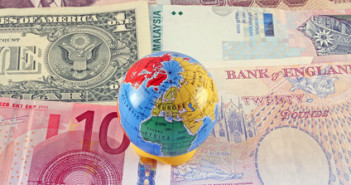The first rate decision by Kuroda carries very high expectations. What can the Bank of Japan do? Quite a lot, says Simon Smith of FxPro. In the interview below, Smith lists the various measures that the BOJ can take.
He also discusses which currencies would benefit from SNB diversification, the impact of the Cypriot crisis and more topics that move currencies.
 Simon has over seventeen years experience of macro forecasting and investment strategy research. Prior to joining FxPro in May 2010, Simon was a consultant with Thomson Reuters, having spent four years as Chief Economist at Weavering Capital. He has held economic and strategy positions with Standard & Poor’s, together with consultancy firms 4Cast and MMS International. Simon holds an MSc. in Economics from the University of London and a BSc. from Brunel University.
Simon has over seventeen years experience of macro forecasting and investment strategy research. Prior to joining FxPro in May 2010, Simon was a consultant with Thomson Reuters, having spent four years as Chief Economist at Weavering Capital. He has held economic and strategy positions with Standard & Poor’s, together with consultancy firms 4Cast and MMS International. Simon holds an MSc. in Economics from the University of London and a BSc. from Brunel University.
- What will Japan have to do to weaken the yen at this week’s much anticipated policy meeting?
In short, quite a lot. A great deal of expectation has been created around what the Bank of Japan can do to achieve the 2% inflation target and the more recent recovery in the yen reflects the fact that the market had gone too far on talk alone. They would have to deliver a number of smaller technical measures that have been muted, including the scrapping of the bank note rule, extending the maturity of bond purchases beyond 3 years, the combining of Rinban and asset purchase operations. All this would probably just stem further yen strength. To weaken the yen, they would have to go beyond this, such as buying overseas bonds, buying bonds beyond 10 year maturity or introducing some specific ‘intermediate targets’ such as the Fed has done with the unemployment rate.
Update: BOJ Delivers – USD/JPY Leaps
- The events around Cyprus set a few worrying precedents in the euro-zone. Has the confidence in euro-zone banks been seriously damaged? What can the ECB do in this context?
Confidence has been dented, rather than seriously damaged. Yes, the initial Cyprus proposal was a monumental error (in imposing a levy on deposits less than €100k), but in terms of the current deal, it’s just a reminder that €100k is the line in the sand and that the ability of the EU to bailout everyone and everything naturally has its limits. And the subsequent remarks and clarifications from Dijsselbloem did nothing to help matters. I’m not sure that there is much that the ECB can do to rectify this, or that they should, otherwise we’d be in a good cop/bad cop situation. As they were with Cyprus, they just need to be clear where the boundaries lie.
- If the euro extends the recent falls, the SNB will probably step up its efforts to maintain the 1.20 floor under EUR/CHF. What currencies could then enjoy a potential SNB diversification?
Primarily the Canadian and Aussie dollars. These have already seen a doubling of their share of central bank reserve holdings in the past 3 years. Furthermore, both have become less correlated with ‘risk’ in general as investors have focused more on sovereign fundamentals. In contrast to previous occasions, I would not see sterling benefitting this time around, given expectations of more QE and the less solid fiscal backdrop.
- Contrary to a few other central banks, the BOE has expressed worries about the weaker pound. Could this lead to some kind of more hawkish statements? Or will any new policy wait for Carney?
The monetary policy committee seems to be fairly strongly divided between those looking for more QE (including the current governor) and those who are not. Interestingly those wanting to hold steady did express concerns over the credibility aspects of further easing and the fact that the weakness in sterling would be a bad reflection of central bank policy. I think there is a decent chance that policy will remain on hold until the new governor comes in on 1st July.
- China’s non-manufacturing PMI is on the rise. This figure is often overlooked, as China’s economy leans to manufacturing. Can we expect the Chinese services sector to gain more traction in the future?
It’s the natural progression to shift from manufacturing to services has we’ve seen in the developed world in recent decades. For China, there is also the issue that it’s not the low-cost manufacturing sector it once was, with wages having risen substantially in recent years, leading to some on-shoring of manufacturing and jobs previously out-sourced, or moves to other lower costs places in Asia. So yes, we should be paying more attention to services, but the shift is going to take time. Many services are less exportable than goods, so there needs to be a shift in the structure of the Chinese society and the shift towards a more consumption orientated economy would naturally help. But these shifts takes years, more like decades, so it’s not going to happen overnight.
Further reading: 5 Most Predictable Currency Pairs – Q2 2013
